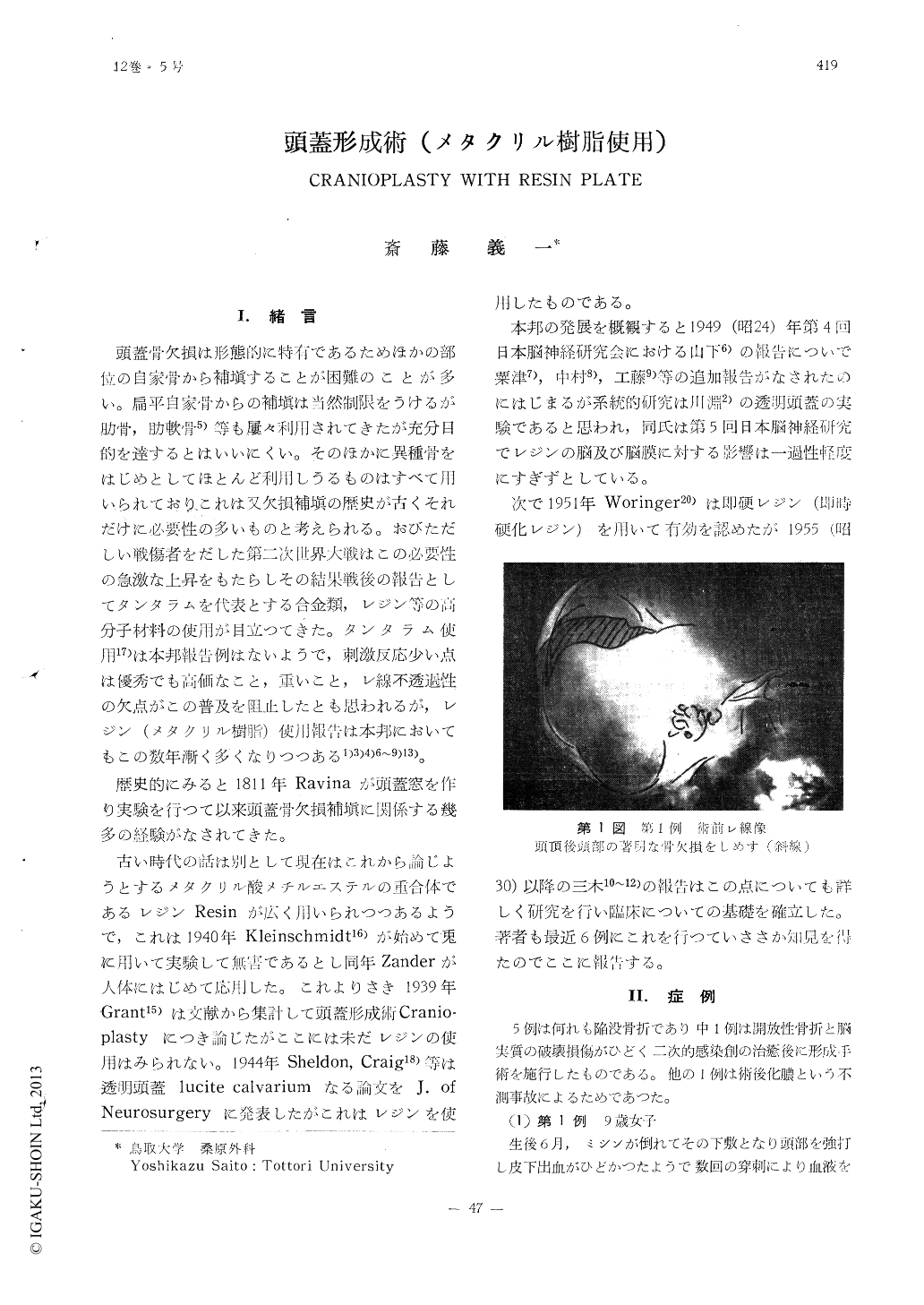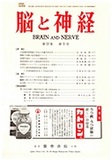Japanese
English
- 有料閲覧
- Abstract 文献概要
- 1ページ目 Look Inside
I.緒言
頭蓋骨欠損は形態的に特有であるためほかの部位の自家骨から補填することが困難のことが多い。扁平自家骨からの補填は当然制限をうけるが肋骨,肋軟骨5)等も屡々利用されてきたが充分目的を達するとはいいにくい。そのほかに異種骨をはじめとしてほとんど利川しうるものはすべて用いられておりこれは又欠損補填の歴史が古くそれだけに必要性の多いものと考えられる。おびただしい戦傷者をだした第二次世界大戦はこの必要性の急激な上昇をもたらしその結果戦後の報告としてタンタラムを代表とする合金類,レジン等の高分子材判の使用が目立つてきた。タンタラム使用17)は本邦報告例はないようで,刺激反応少い点は優秀でも高価なこと,重いこと,レ線不透過性の欠点がこの普及を阻止したとも思われるが,レジン(メタクリル樹脂)使用報告は本邦においてもこの数年漸く多くなりつつある1)3)4)6〜9)13)。
歴史的にみると1811年Ravinaが頭蓋窓を作り実験を行つて以来頭蓋骨欠損補填に関係する幾多の経験がなされてきた。
I reported here 6 cases of cranioplasty with resin (methyl metharylate) including 3 infan-ts, 7, 9 and 2 1/2 years of age. They were resulted from head injury with fractures of the skull.
In one case having purulent compound frac-ture of the skull, the cranioplasty was per-formed after 2 months from the healing of the wound. Subcutaneous suppuration appe-ared after operation but the wound cured secondrily after drainage without removing the resin plate.
In another case autogenous bone flap was used but the suppurative wound was'nt cured until the flap was removed. 6 months after this the cranioplasty with resin plate wassuccessful.
3 infants showed no complication in their follow up results. One of them, 9 years old girl, showed a large skull defect resulting from previous trauma in her new-borne child-hood, and a large subdural hygroma was removed. After operation she improved very well in her neurological symptomes and the cranioplasty with resin didn't harm this im-provement.

Copyright © 1960, Igaku-Shoin Ltd. All rights reserved.


